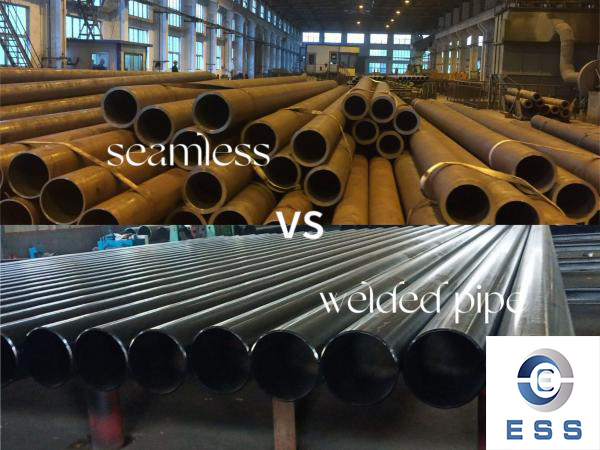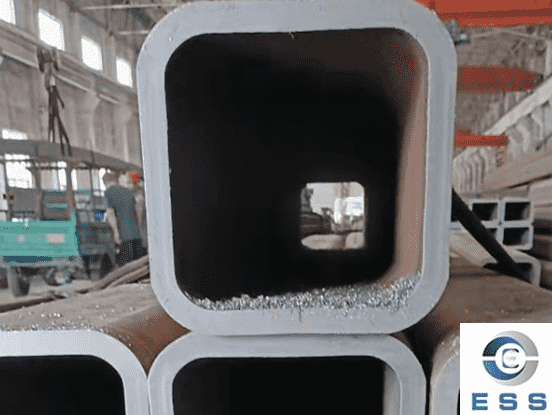What are the consider selecting seamless or welded pipe?
Pipelines are an essential part of every market, working as channels for fluids, gases, and other materials. When choosing the right kind of pipeline for a particular application, among the crucial decisions is picking in between seamless and welded pipe. The option in between the two depends upon numerous factors consisting of expense, performance, material compatibility and application requirements. In this short article, we have actually delved into the elements that play a key role in between seamless and welded pipes.

Seamless vs welded pipe:
1. Production process The most fundamental distinction between seamless pipes and welded pipelines is their production procedure. Seamless tubes are manufactured by a hot or cold illustration procedure in which a strong round blank is perforated to form hollow tubes. The pipe produced by this process has no seams or welds. Welded pipelines, on the other hand, are made by signing up with the edges of flat sheets or strips by welding processes such as electric resistance welding (ERW), immersed arc welding (SAW), or seamless welding.
2. Strength and durability When it comes to strength and durability, seamless tubing normally has a benefit. Seamless pipe has a more uniform structure due to its production process, which leads to a smoother inner surface. This uniformity reduces the threat of weak points and makes seamless tubing better for applications including high pressure, high temperature or destructive environments. Welded piping, while typically strong, might have potential weak points at the welded joints, making them more prone to tiredness and deterioration.
3. Expense factors to consider Expense is a crucial factor impacting the selection of seamless and welded pipelines. Seamless tubing needs a more complex manufacturing procedure including extrusion or piercing of a solid billet, which can cause greater production costs. Welded pipe, on the other hand, includes simpler manufacturing methods and is often more economical. For that reason, if expense is a major consideration and the application does not need the outright highest performance, then welded pipe might be a better option.
4. Size range Both seamless and welded pipe are readily available in a variety of sizes, but seamless pipe has advantages in bigger diameters and thicker walls. Because there are no seams, seamless tubing can be produced in bigger sizes, making it ideal for applications needing bigger hole sizes and thicker walls. Welded pipe is more frequently offered in standard sizes and is better matched for applications that do not require large or thick pipeline.
5. Application Particular Requirements Particular application requirements largely influence the choice in between seamless and welded pipe. For example, industries such as oil and gas, petrochemicals, and power generation frequently need pipelines to withstand high pressures and temperature levels. In such cases, seamless pipes are frequently preferred due to their remarkable strength and resistance to pressure and temperature changes. Welded tubing, while less ideal for extreme conditions, can still carry out well in applications including moderate pressures and temperature levels.
6. Corrosion resistance In industries dealing with destructive fluids or environments, rust resistance is a key aspect. Seamless pipes tend to exhibit better deterioration resistance than welded pipelines due to their consistent structure and lack of weld joints. The welding procedure may create a heat-affected zone that is prone to corrosion. However, advances in welding innovation and making use of corrosion-resistant products have alleviated this issue to some extent. Still, for applications where deterioration resistance is vital, seamless tubing may be a safer choice.
7. Material Compatibility Compatibility of piping products with the substance being communicated is critical. Seamless pipelines are more flexible in terms of material compatibility, as they can be fabricated from a variety of materials, including metals and alloys, without jeopardizing their structural stability. Welded piping, while also suitable with a variety of products, may have restrictions due to the welding procedure utilized and how the product responds to the heat brought on by welding.
8. Aesthetic appeals and surface area finish In some applications, visual appeals and surface area finish play a crucial role. Due to its manufacturing procedure, seamless pipe tends to have a smoother, more aesthetically pleasing finish. This is useful for markets where look is essential, such as architectural and ornamental applications. Welded pipe might have a slightly rougher appearance due to the welded joints. Nevertheless, advances in welding technology have actually also led to improvements in the surface finish of welded pipelines.
9. Shipment times and availability Welded pipe typically has much shorter lead times and is readily offered in basic sizes. Seamless tubing can have longer preparations due to the more complicated manufacturing process, especially for customized sizes and specifications. For that reason, the seriousness of the task and the prompt availability of the needed pipelines ought to be considered.
10. Effect on the environment Ecological aspects are getting more and more attention in the decision-making process. The manufacturing procedure of both seamless and welded pipelines has an impact on the environment. Seamless pipes generally consume more energy and resources during production due to the extrusion or perforation process. Welded piping, while typically thought about more eco-friendly in terms of energy consumption, also involves an exothermic welding process that in some cases requires anti-corrosion coverings. Ecological impact should be weighed against efficiency and application requirements.
Conclusion
When it concerns choosing in between seamless and welded pipe, there is no one-size-fits-all answer. Each type has its benefits and disadvantages, and the choice is made based on a mix of expense, strength, sturdiness, application requirements, product compatibility, and more. By carefully assessing these factors in your specific project or application, you can obtain information about performance and life time choices. Whether it's seamless tubing for high-pressure, high-temperature applications or welded tubing for cost-effective options, the option needs to match your task goals and industry needs.













 Eastern Steel Manufacturing Co.,Ltd not only improve product production and sales services, but also provide additional value-added services. As long as you need, we can complete your specific needs together.
Eastern Steel Manufacturing Co.,Ltd not only improve product production and sales services, but also provide additional value-added services. As long as you need, we can complete your specific needs together.










